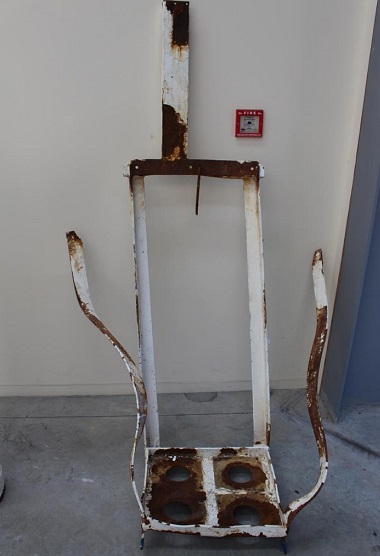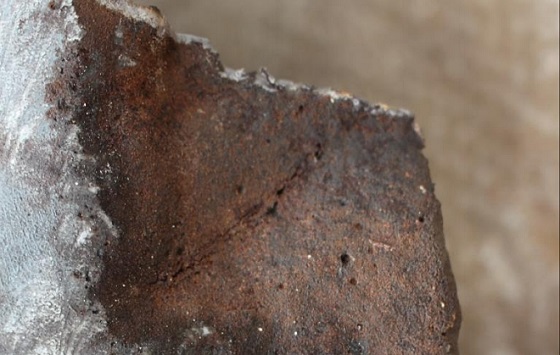New Zealand’s Transport Accident Investigation Commission (TAIC) (Wellington, New Zealand) published its final report in January 20191 on a fatal February 2017 accident at Port Chalmers in Dunedin, New Zealand, involving the massive Emerald Princess cruise vessel, in which a nitrogen cylinder burst and fatally injured a nearby crew member.
Captain Tim Burfoot, who serves as the TAIC’s chief investigator of accidents, says the crew was re-pressurizing gas cylinders after maintenance when the cylinder burst. The cylinder was part of a stored energy system providing an alternative means of launching lifeboats in the event of power failure.
“The nitrogen cylinder burst at below normal working pressure because its casing had corroded to about 30% of original thickness,” Burfott says. “The failed cylinder and several others in the system were not fit for purpose, despite having been surveyed recently, and should not have been in service.”
The TAIC is a standing commission of inquiry responsible for investigating maritime, aviation, and rail accidents and incidents for New Zealand, and coordinating and cooperating with other global accident investigation organizations. The principal purpose of its inquiries is to determine the circumstances and causes of occurrences, with a goal of avoiding similar occurrences in the future.
The commission says its purpose is not to ascribe blame to any person or agency, or to assist an agency in pursuing criminal, civil, or regulatory action. Instead, TAIC carries out its purpose by informing members of the transport sector and the public, both domestically and internationally, of the lessons that can be learned from transport accidents and incidents.
Events of February 9, 2017
Built in 2007, the 288.6-m-long (946.9 ft), 113,561-ton Emerald Princess hosts 3,113 passengers and 1,173 crew members at capacity. The vessel is fitted with 18 lifeboats, each needing an emergency launching and recovery system so that the lifeboats can be launched even if the diesel-electric ship suffered a total power failure.

To supply the energy for such an operation, each lifeboat requires a hydraulic piston accumulator and a bank of four high-pressure nitrogen cylinders used to pneumatically launch it. Each “bank” of cylinders sits within a steel frame unit, secured by a steel band. These banks are fitted on a covered but open deck, thus exposing them to salt spray and sea air.
 Crew members noticed on February 9, 2017, that the pressure of the nitrogen system for one of the lifeboats had dropped to about 2,393 psi (16.5 MPa)—below the normal working pressure range of between 2,611 to 3,046 psi (18.0 to 21.0 MPa).
Crew members noticed on February 9, 2017, that the pressure of the nitrogen system for one of the lifeboats had dropped to about 2,393 psi (16.5 MPa)—below the normal working pressure range of between 2,611 to 3,046 psi (18.0 to 21.0 MPa).
From there, an engineer and two fitters “carried out a soap bubble test on the nitrogen piping system and the fittings on the nitrogen cylinder, but they found no source of the leak,” according to the final report issued. “They did not soap-bubble test the nitrogen cylinders, because they thought it was highly unlikely that the pressurized cylinders had been structurally compromised,” it continues.
The crew then decided to replace the entire manifold in case there were leaks within the unit. To do this, they depressurized the system and exchanged the pneumatic distribution block with a new one before following the standard procedure to re-pressurize the system, the TAIC says. During the final stage of the re-pressurizing operation, one of the four nitrogen cylinders burst—fatally injuring a worker who was standing close by. The cylinder exploded with such force that the top of it was never found.
Metallurgical Examination
All of the cylinders for the affected lifeboat were taken to the TAIC’s technical facility in Wellington, where an examination was made by an independent metallurgical contractor. The metallurgist found that corrosion had reduced the thickness of the cylinder wall by 70% to only 1.5 mm (0.06 in) at the point of failure, compared to the designed minimum thickness of 4.8 mm (0.19 in).
“The burst nitrogen cylinder had suffered significant corrosion at the point of failure, which was situated approximately 150 mm (5.9 in) below where the steel securing band had clamped the cylinder within its frame,” TAIC investigators write. “The corrosion had developed on the outside of the cylinder. The internal surface was clear of corrosion.”
 A second area of corrosion was found near the bottom of the cylinder, as well as a third area of concern where the protective coating had been scraped away to observe the cylinder’s identification details, according to the report. “The nitrogen cylinder burst as a result of overload caused by corrosion thinning,” TAIC investigators say. Moreover, a number of other cylinders on the ship and the piston accumulator were also observed to have corrosion-related damage.
A second area of corrosion was found near the bottom of the cylinder, as well as a third area of concern where the protective coating had been scraped away to observe the cylinder’s identification details, according to the report. “The nitrogen cylinder burst as a result of overload caused by corrosion thinning,” TAIC investigators say. Moreover, a number of other cylinders on the ship and the piston accumulator were also observed to have corrosion-related damage.
The nitrogen cylinders were inspected annually by the manufacturer’s authorized representative, and the most recent inspection was only two weeks prior to the accident. On each occasion, the cylinders were found to be in satisfactory working condition—although the manufacturer noted that the nitrogen bottles “were aged” on its inspection before the blast, adding that a replacement was recommended.
“The circumstances of this accident raise the question of whether the current inspection requirements for a competent person are adequate for a pressure vessel stored in a harsh marine environment,” TAIC investigators write. “The commission is concerned that there might be other pressure vessels part of the same system or similar systems that could pose a significant danger to seafarers and passengers.”

Final Report Conclusions
In its final report, the commission concluded that corrosion on high-pressure cylinders in marine environments should be fully investigated by qualified persons competent in examining high-pressure cylinders before doing any remedial work, and before allowing the cylinder back into service.
“The wider issue is the lack of global minimum standards for inspection, testing, and rejecting pressure cylinders for stored energy systems on lifeboat launching installations,” Burfoot says. “So there is wide variation in, and sometimes inadequate, standards applied by flag state administrations, classification societies, and authorized service providers.”
In the final report, TAIC recommends that the manufacturer of the lifeboat launching system improve its training, and that Maritime New Zealand (Wellington, New Zealand) with the International Maritime Organization (London, United Kingdom) raise the urgent global need for adequate minimum standards for the inspection, testing, and rejection of pressure vessels.
An earlier interim report2 included recommendations regarding the condition and checking of similar installations. According to the TAIC, vessel operator Princess Cruise Lines, Ltd. (Santa Clarita, California, USA) then took immediate safety actions to prevent similar accidents on its ships.
Source: TAIC, taic.org.nz.
References
1 “Burst Nitrogen Cylinder Causing Fatality on Board the Passenger Cruise Ship Emerald Princess,” Transport Accident Investigation Commission, Final report MO-2017-203, January 2019.
2 “Burst Nitrogen Cylinder Causing Fatality on Board the Passenger Cruise Ship Emerald Princess,” Transport Accident Investigation Commission, Interim Report MO-2017-203, April 2017.